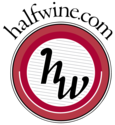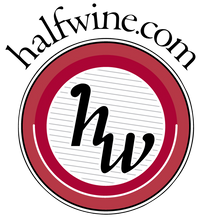Sparkling
Champagne
Champagne Blend
Cork
Dry
No Oak
ABV 12%
Tasting notes
Fresh, fruity (apples, red fruits) with fine bubbles. Perfect as an aperitif or with fresh fruit dessert (strawberries, blackcurrants, blueberries).
Why we recommend this wine
Bonville’s Blanc de Blanc was the recommended wine at Les Berceaux a one star Michelin restaurant in Eperney (see our trip notes here) and pretty good it was too so we went round the next day to taste their range. We also tasted their rosé which we thought was excellent; our type of wine even though we don’t particularly fancy rosé. We were pleased to see that it came in half bottles. A key factor is also the low dosage, less than 7g/l.
The wine
Similar to Bonville’s Blanc de Blanc, this champagne is a blend of wines from 3 vintages. To this is added 8% of Pinot Noir which has been made in oak barrels. The chardonnay is a blend of grapes from Bonville’s home village of Avize and its neighbour Oger. The Pinot Noir comes from the village of Ambonnay that has grand cru vineyards that are primarily Pinot Noir. Just as raspberries and other red fruits add something to apples when making a pie, so the addition of ‘proper’ red wine with its red fruit flavours and aromas add something to a chardonnay based wine.
The wine estate
Franck Bonville makes what is referred to as Grower Champagne. In Champagne a large proportion of the vineyards are family owned and worked. Traditionally they have sold their grapes to the Champagne “Houses” who then make the champagne. But an increasing number of families who own the better vineyards have gone into making their champagne. Hence the term Grower Champagne.
Bonville, a third generation champagne maker, is based in the village of Avize on the Côte des Blancs area of Champagne. Their approach is an “environmentally respectful form of viticulture, a meticulous wine-making process, and a long ageing process”.
champagne-franck-bonville.com
Food and wine
Champagne is better if it has been opened and allowed to breathe for 20 to 30 minutes before drinking. We didn’t believe it when we were first advised to do this but it really works. Just open the bottle and leave it in the fridge; it will not lose its bubbles but will taste much better.
The addition of the pinot noir increases the range of flavours that this champagne match. In addition to food that is light with subtle flavours it will also go with fresh fruit desserts based on red fruits. Also see our guide to pairing food and wine here.
Did you know?
This rosé is made from the simple blending, that is, mixing of red wine to a white to impart colour. This method is discouraged in most wine growing regions, especially in France, where it is forbidden by law, except for Champagne. The other method of making rosé, the saignée method, removes the grape juice from contact with the red grape skins when the targeted colour has been achieved.
Fresh, fruity (apples, red fruits) with fine bubbles. Perfect as an aperitif or with fresh fruit dessert (strawberries, blackcurrants, blueberries).
Why we recommend this wine
Bonville’s Blanc de Blanc was the recommended wine at Les Berceaux a one star Michelin restaurant in Eperney (see our trip notes here) and pretty good it was too so we went round the next day to taste their range. We also tasted their rosé which we thought was excellent; our type of wine even though we don’t particularly fancy rosé. We were pleased to see that it came in half bottles. A key factor is also the low dosage, less than 7g/l.
The wine
Similar to Bonville’s Blanc de Blanc, this champagne is a blend of wines from 3 vintages. To this is added 8% of Pinot Noir which has been made in oak barrels. The chardonnay is a blend of grapes from Bonville’s home village of Avize and its neighbour Oger. The Pinot Noir comes from the village of Ambonnay that has grand cru vineyards that are primarily Pinot Noir. Just as raspberries and other red fruits add something to apples when making a pie, so the addition of ‘proper’ red wine with its red fruit flavours and aromas add something to a chardonnay based wine.
The wine estate
Franck Bonville makes what is referred to as Grower Champagne. In Champagne a large proportion of the vineyards are family owned and worked. Traditionally they have sold their grapes to the Champagne “Houses” who then make the champagne. But an increasing number of families who own the better vineyards have gone into making their champagne. Hence the term Grower Champagne.
Bonville, a third generation champagne maker, is based in the village of Avize on the Côte des Blancs area of Champagne. Their approach is an “environmentally respectful form of viticulture, a meticulous wine-making process, and a long ageing process”.
champagne-franck-bonville.com
Food and wine
Champagne is better if it has been opened and allowed to breathe for 20 to 30 minutes before drinking. We didn’t believe it when we were first advised to do this but it really works. Just open the bottle and leave it in the fridge; it will not lose its bubbles but will taste much better.
The addition of the pinot noir increases the range of flavours that this champagne match. In addition to food that is light with subtle flavours it will also go with fresh fruit desserts based on red fruits. Also see our guide to pairing food and wine here.
Did you know?
This rosé is made from the simple blending, that is, mixing of red wine to a white to impart colour. This method is discouraged in most wine growing regions, especially in France, where it is forbidden by law, except for Champagne. The other method of making rosé, the saignée method, removes the grape juice from contact with the red grape skins when the targeted colour has been achieved.




